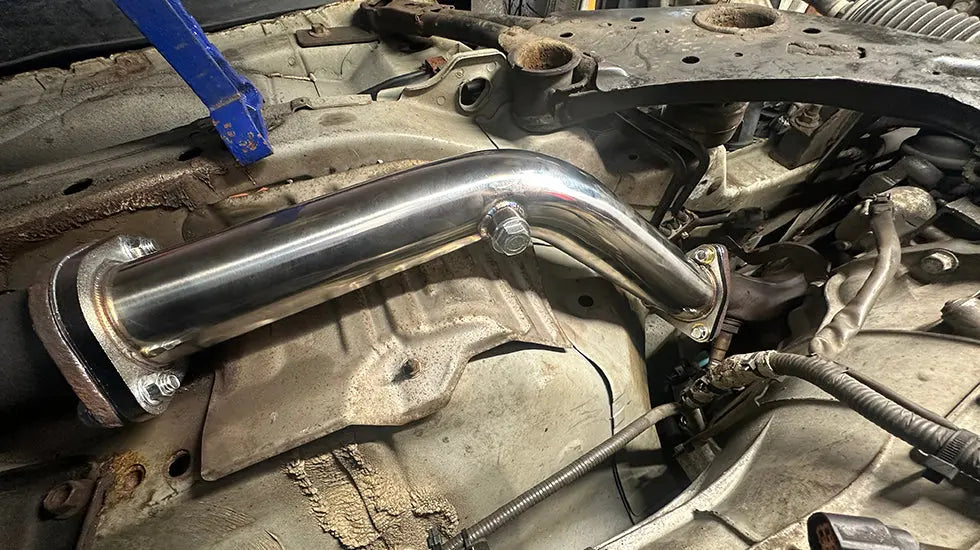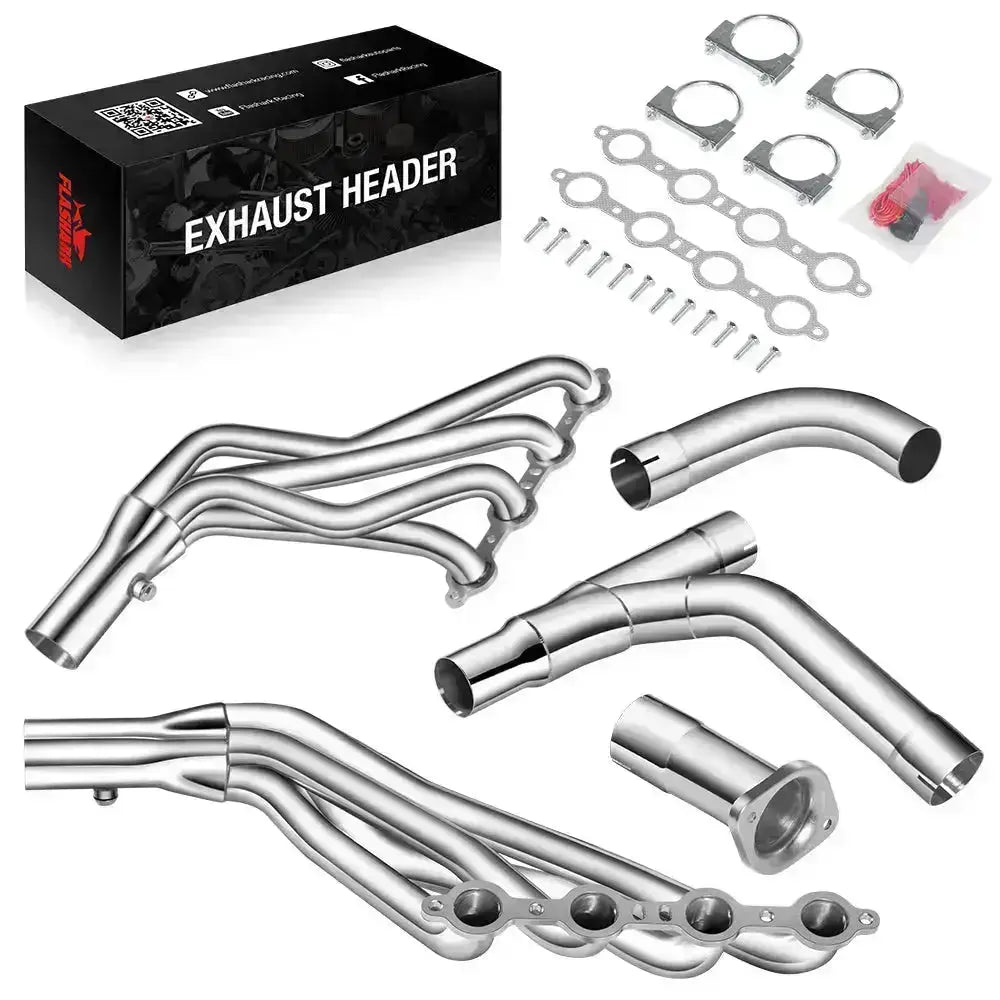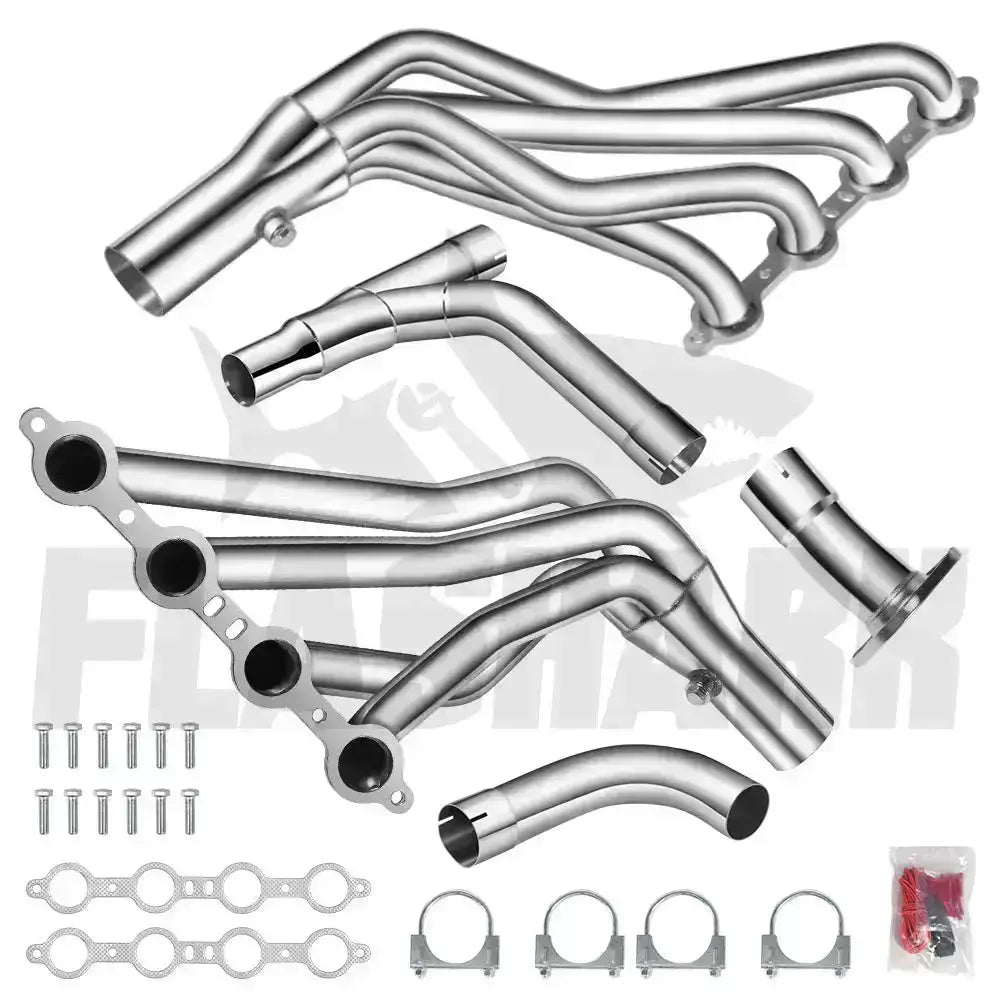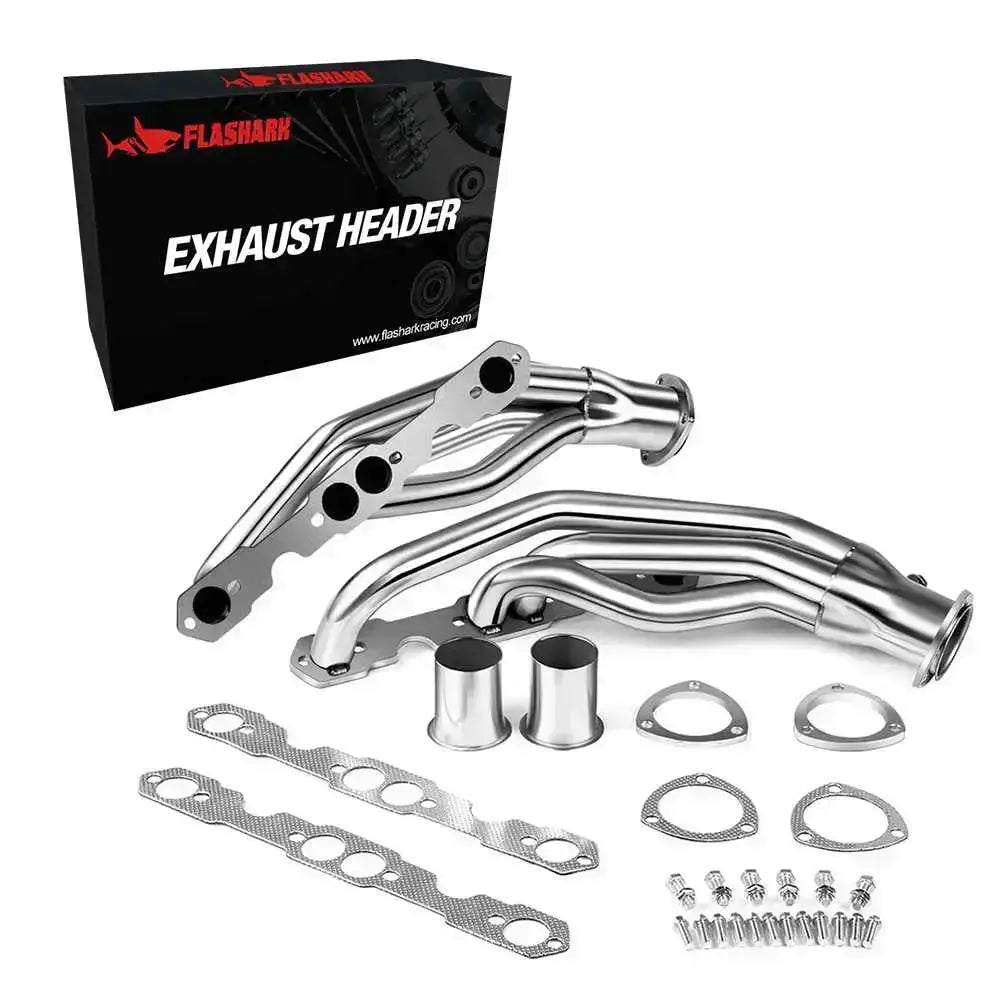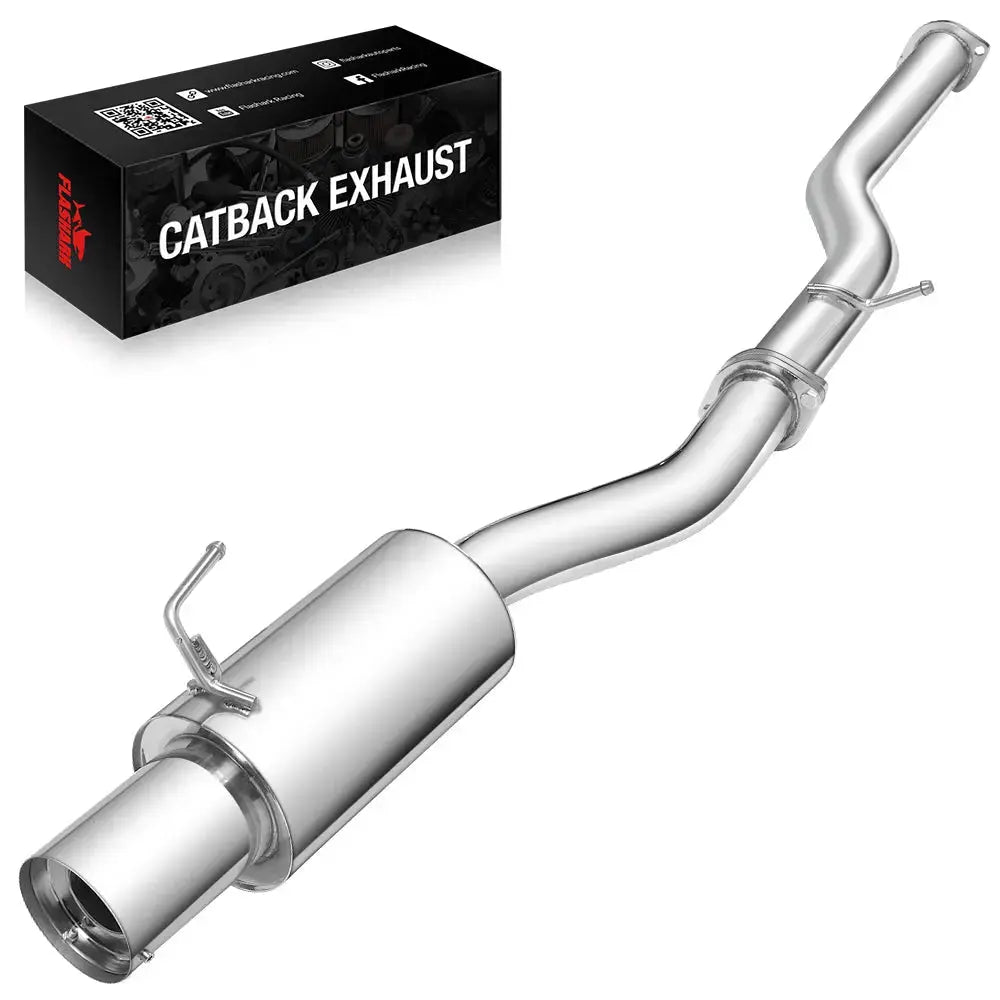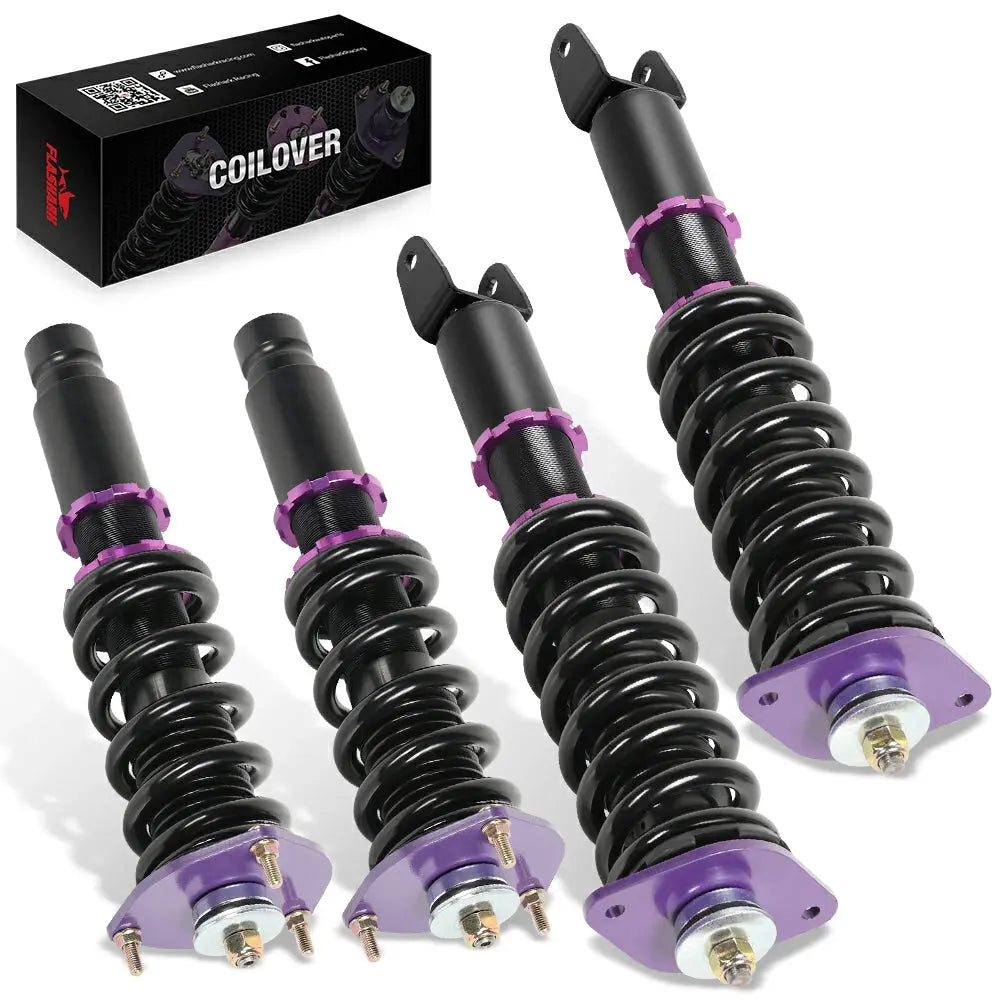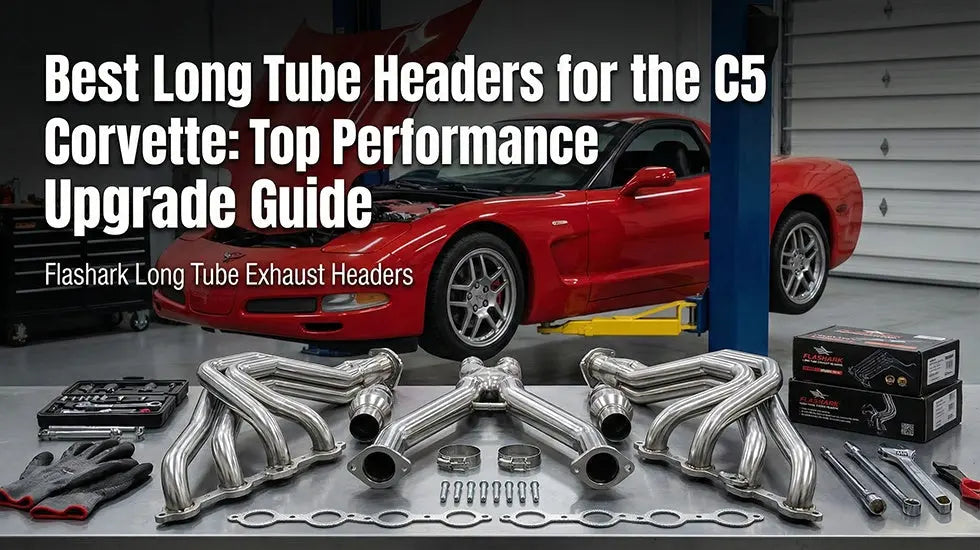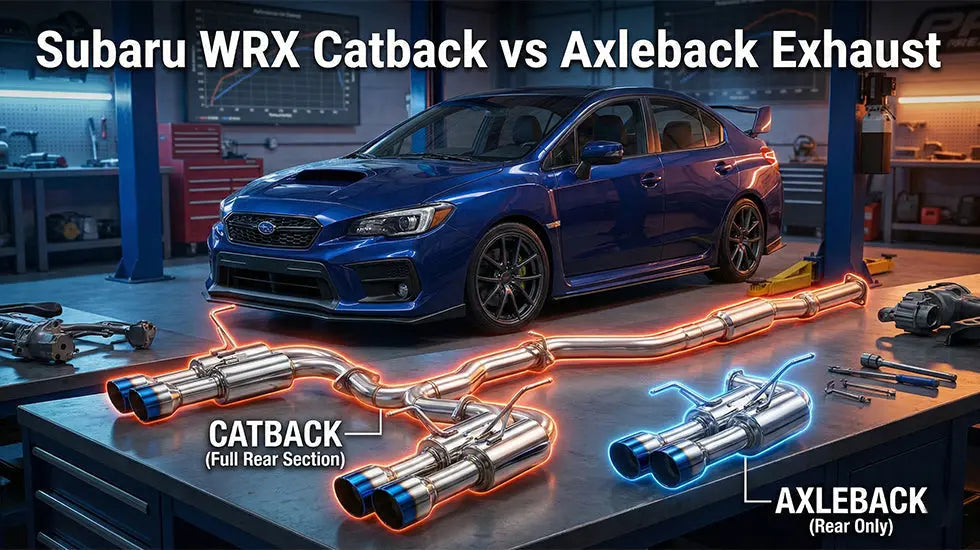When it comes to modifying your car’s exhaust system, two terms you’ll frequently encounter are downpipe and straight pipe. These are essential components for improving your car's performance, sound, and overall driving experience. But what are the key differences between them? How do you decide which one is right for your vehicle? Let’s break down these two popular modifications and explore their benefits, drawbacks, and applications.
What is a Downpipe?
A downpipe is a key component in a turbocharged vehicle's exhaust system. It connects the turbocharger’s outlet to the rest of the exhaust system. Its main function is to reduce exhaust gas pressure, allowing the turbo to spool faster, which improves engine performance, especially acceleration.

In simple terms, a downpipe helps exhaust gases flow more freely from the turbo, leading to better power delivery and more efficient engine performance.
Advantages and Disadvantages of a Downpipe
Advantages:
Improved Turbo Efficiency: Reduces turbo lag and allows for quicker spool, improving acceleration.
Better Performance: Increases horsepower and torque by reducing exhaust backpressure.
Emissions Compliance (Catted Downpipes): Keeps the catalytic converter, helping your car pass emissions tests.
Reduced Exhaust Heat: Helps maintain better engine cooling by managing exhaust heat.
Smoother Turbo Spool: Offers more responsive power delivery, especially in performance setups.
Disadvantages:
Installation Complexity: Requires professional installation, especially in turbocharged vehicles.
Legal Issues (Catless Versions): Catless downpipes are illegal in many regions due to emissions laws.
Higher Cost: High-quality downpipes, especially catted ones, are more expensive.
Check Engine Light (CEL): Removing the catalytic converter may trigger the CEL, requiring additional fixes.
Potential Turbo Damage: Poor installation or low-quality parts may harm the turbo or exhaust system.
What is a Straight Pipe?
A straight pipe is an exhaust modification that removes restrictions like the catalytic converter and mufflers. It allows exhaust gases to flow freely from the engine, reducing backpressure and improving engine efficiency. This results in better throttle response and potentially more horsepower, making it a popular choice for performance and track vehicles. However, it comes with increased noise and potential legal issues due to emissions regulations.
Advantages and Disadvantages of a Straight Pipe
Advantages:
Maximum Exhaust Flow: Eliminates restrictions for the best exhaust flow and performance.
Aggressive Sound: Provides a loud, raw exhaust note that many enthusiasts love.
Simpler Installation: Easier and cheaper to install compared to downpipes.
Cost-Effective: Straight pipes are generally cheaper than high-flow downpipes.
Reduced Turbo Lag (Sometimes): Reduces backpressure, which can improve turbo spool in some cases.
Disadvantages:
Extremely Loud Exhaust: Can be unbearably loud for daily driving and may violate noise regulations.
Legality Issues: Removing the catalytic converter makes it illegal in many areas due to emissions laws.
No Turbo Efficiency Gains: Doesn’t improve turbo performance or acceleration like a downpipe.
Potential Engine Damage: Too much flow can harm engine tuning or cause issues like knocking.
Fails Emissions Tests: Straight pipes often fail emissions inspections, especially without a catalytic converter.
Key Differences Between Downpipe and Straight Pipe
Both downpipes and straight pipes are performance modifications, but they offer different benefits and cater to different needs. Let’s dive into the main differences between the two.
Performance Differences
The downpipe typically offers more significant performance gains, especially in turbocharged vehicles. By reducing exhaust backpressure and improving turbo efficiency, a downpipe enhances power delivery and responsiveness. It allows the turbo to spool more quickly, which leads to improved acceleration and overall performance.
A straight pipe, on the other hand, is focused purely on flow. While it may slightly increase horsepower by reducing restrictions in the exhaust system, its primary benefit is in maximizing exhaust flow and sound. Straight pipes generally don’t provide the same performance boost as a downpipe, especially in turbocharged vehicles, where turbo efficiency plays a significant role in performance.
Sound and Noise Comparison
One of the most noticeable differences between a downpipe and a straight pipe is the exhaust sound. A straight pipe will make your car significantly louder, as it removes most of the noise-reducing components like the muffler. This creates a deep, aggressive exhaust note that many performance enthusiasts love. However, it can also be an issue in residential areas or on public roads, where noise regulations may apply.
A downpipe, particularly a catted downpipe, provides a more moderate exhaust note. While it still increases the sound level compared to the stock exhaust, it won’t be as extreme as a straight pipe. This makes downpipes a better choice for those who want to enhance performance without drawing too much attention.
Legal and Environmental Impact
Another important consideration when choosing between a downpipe and a straight pipe is legality and emissions compliance. Removing the catalytic converter with a straight pipe is illegal in many areas because it bypasses emissions control systems, which can lead to increased pollution. This is why straight pipes are often used in race cars or track vehicles, where emissions are not regulated.
A downpipe, especially a catted version, is more likely to be emissions-compliant. While a catless downpipe removes the catalytic converter, most car owners prefer high-flow catted downpipes that retain the converter but improve its efficiency. These options strike a better balance between performance and legality, ensuring you remain compliant with emissions laws while still enhancing your car’s performance.
Conclusion
Both downpipes and straight pipes offer unique advantages depending on your performance goals and vehicle type. A downpipe is ideal for turbocharged vehicles looking for improved engine performance and efficiency, while a straight pipe is best suited for enthusiasts seeking maximum exhaust flow and a louder, more aggressive sound.
When deciding between the two, it’s essential to consider your car’s requirements, the legal implications of removing emissions control components, and your desired performance results. Whatever you choose, upgrading your exhaust system can unlock significant power gains and a more thrilling driving experience.
Last Chance! FlashArk Racing Limited-Time Discounts Are Here!
Don't miss out on these exclusive deals! FlashArk Racing is currently offering amazing limited-time promotions to help you upgrade your racing gear and accessories at unbeatable prices. Check out our current discounts:
- Extra 10% Off for All Exhaust Headers
- Extra 11% Off for All Catback Exhausts
- Extra 12% Off for All Downpipe Exhausts
- Extra 11% Off for All Catalytic Converter
- Extra 13% Off for Cold Air Intake
- Extra 15% Off for DPF & CAT Delete Pipe
Hurry, these offers are available for a limited time only! Click the link below to grab your discount right now:
👉Click here to visit the Flashark discount page and claim your offer!

